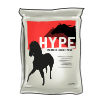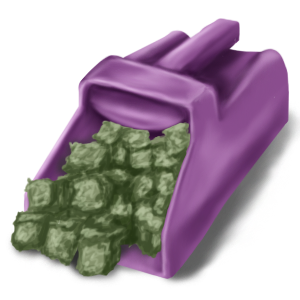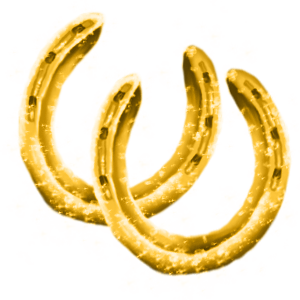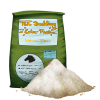|
Copyright © 2012-2020: Flying For Home & Red Zephyr Studios. All Rights Reserved. Privacy Statement | Staff & Credits | Terms Of Service Use of this site signifies your understanding of and agreement to the Terms of Service. |
First Strides
Horse Care
➤Condition & Energy
Maturity
Longevity & Soundness
Feeding
Exercising
Training Guide
Buddy Workouts
Injuries
Gelding
Buddies
Retiring & Pensioning
Buying & Selling
Pasture
Stats & Traits
Racing
Series Races
Color Shows
Breeding
Genetics
Change Log
Item Database
Horse Care
➤Condition & Energy
Maturity
Longevity & Soundness
Feeding
Exercising
Training Guide
Buddy Workouts
Injuries
Gelding
Buddies
Retiring & Pensioning
Buying & Selling
Pasture
Stats & Traits
Racing
Series Races
Color Shows
Breeding
Genetics
Change Log
Item Database
Condition & Energy
| Athleticism |
|---|
| Athleticism Gene |
| Athleticism works hand in hand with Energy and Condition. It determines how much Energy horses use in training and buddy workouts as well as how quickly they regenerate Energy and lose Condition at rollovers. Horses with Strong Athleticism can race more often (monthly), while horses with Low Athleticism may only be able to race every other month. |
| How to Evaluate Athleticism |
|
Athleticism is a Supplementary Gene that can only be viewed with Forever Pro, however, you can estimate a horse's Athleticism by keeping track of how much Energy they use when training. Athleticism for those who have purchased the Supplementary Gene is viewable in the horse’s genetics and on their exercise page.
To learn more about determining your horse's Athleticism without an account upgrade, refer to the Energy consumption chart in the Training Guide. After doing a few trainings and noting how much Energy was lost, you should be able to pinpoint your horse's Athleticism. |
| How to Improve Athleticism |
|
The Athleticism gene is broken down into 3 levels: Strong, Moderate and Low. Low is the most undesirable level as it causes a horse to lose large amounts of Energy in training. Horses are guaranteed to improve from Low to Moderate Athleticism by: • Using Blazing Horseshoes • Transitioning to Driving, Steeplechase, or Contesting • Gelding (if a colt) Horses have a chance to improve from Low to Moderate Athleticism by: • Doing long gallops • Transitioning a horse to Marathon The only way to move a horse from Moderate to Strong Athleticism is to give them Golden Horseshoes, which can be crafted in the Smelter (Workshop). |
Condition |
| Managing Condition |
|
Managing Condition is very important to your horse's success in both racing and breeding. Condition is a trait which is always in flux. All horses lose Condition at each month's rollover. The rate at which horses lose Condition is based on their Athleticism gene. Racing horses over the age of 7 and bloodstock over the age of 15 will have a more difficult time maintaining Condition. Horses with higher Risk will also may have a slightly harder time maintaining Condition. Though Condition is continuously declining, it is not difficult to maintain Condition levels over 80% for most horses. You can improve Condition through most types of exercise, as well as buddy workouts. (See the Training Help pop-out on the Exercise page to learn more about different training types.) Condition also improves each time a horse races, so keeping your horses entered regularly is key to easy maintenance. Feeding your horse will also positively impact Condition, though not as much as training or racing. |
| Impacts in Racing |
|
Condition is considered a minor factor in calculating a horse's Performance Rating, but it is still very important in racing horses. Horses racing with lower Condition will still race slightly worse but, more importantly, they will also be at higher risk of injury. 50% or higher Condition is considered reasonably safe to enter, but it is a good idea to keep it at 90% or higher. In addition to its impacts on PRs and injuries, Condition determines how much Energy horses lose when racing. An unfit horse will become much more exhausted after their race and will face a longer recovery period before they can race again. The same guidelines for Condition listed above will ensure your horses bounce back from each race as quickly as possible. |
Impacts in Breeding |
|
Condition is important to manage in both broodmares and stallions. Condition is critical for mares in foal, as it is the largest determining factor of Pregnancy Risk. Mares with low Condition will gain Pregnancy Risk at each rollover and are at risk of going barren and losing the foal. Mares who are not in foal are also at high risk of going barren if their Condition drops too low.
However, high Condition can help mares regain or improve their fertility. High condition also reduces Pregnancy Risk at each rollover. It is a good idea to keep all mares above 70% Condition, though as with racing horses, 90% is more ideal. Condition must also be carefully managed for stallions. Low Condition at the time of covering can contribute to causing negative anomalies in foals. If you want to avoid risk of negative anomalies, you should follow the same percentage guidelines listed above. |
| Energy |
| Managing Energy |
|
Like Condition, Energy is incredibly important in successfully managing your racing and breeding horses. Energy increases at the end of each month’s rollover depending upon each horse's Athleticism gene. Energy is not related to a horse's Rest gene. Horses will gain anywhere from 20% to 60% of their Energy back each month. This means it can take anywhere from 4 to 10 months for a horse to go from 0% to 100% Energy - if no actions are taken that reduce Energy in the meantime. Energy is lost when horses exercise or race. There are some training options that do not reduce Energy for the first training of the month, so it is possible to train and still maintain 100% Energy. (See the Training Help pop-out on the Exercise page for more information.) The amount of Energy horses lose in races is determined by their Condition at the time of entering. It is important to note that Energy does not impact Rest, and Rest does not impact Energy gains (or losses). |
| Impacts in Racing |
|
Energy is extremely important in racing. A horse will run their best Performance Ratings when they have 100% Energy, but they will still run competitively with energy levels of at least 70%. Energy over 30% is generally regarded as safe though not recommended as horses with low Energy may perform quite terribly, but Energy of at least 70% is the safest bet for your horse to run relatively well.
However, 70/80/90% Energy will influence PR differently, so it is still best, in terms of PR, to enter your horse with the highest Energy possible. For this reason, you should avoid entering multiple races per meet (or month) until you know what kind of racing schedule your horse can handle. In addition, low Energy is one of the most frequent causes of injury in races. This most often happens when a horse is entered in multiple races in a meet and quickly burns through their Energy to the point of breaking down. Following the guidelines above will minimize your horse's chances of being injured due to Energy. Entering at 100% Energy is the best plan for optimal performance but entering at 70% will allow your horse to run safely. As energy dips below 70%, the risk of injury increases exponentially. Running a race with 30% energy or less carries a great risk of injury. |
Impacts in Breeding |
|
Energy levels impact both broodmares and stallions. Low Energy contributes to Pregnancy Risk for mares in foal. To minimize the chances of increasing risk, mares should maintain as close to 100% Energy as possible. Pregnancy Risk can decrease if a mare maintains high Energy levels along with high Condition. Energy may be considered less important for stallions, but it is still something you should keep an eye on. The number of mares a stallion can cover per month is determined by his Energy as well as Athleticism. Stallions with higher Athleticism will be able to cover more mares (perhaps 4 or 5), while stallions with low Athleticism may sometimes only be able to cover one mare, as Athleticism determines how much Energy they will use. |
| Special Feeds & Items | |
|---|---|
| None of the feeds or items listed below are necessary for caring for and managing horses under normal circumstances. However, sometimes you may find that you encounter a situation where a horse needs help with Energy and/or Condition. Some reasons a horse might need a little help is if they are older, have recently been neglected, or need to squeeze in some extra training in preparation before a special race. | |
Hype |
Hype is a standard, easily affordable, type of feed sold in the Feed Mill. Feeding it will increase a horse's Energy. While it is readily available, it should be fed with caution. It will always increase a horse's Risk - significantly so with 2 year olds. It will also slightly decrease a horse’s Experience. |
Alfalfa Cubes |
Alfalfa Cubes are a supplement that you can earn in Rumpled Packages given out by the Rusty Recycler. It will increase Energy by up to 30%. In addition, Alfalfa Cubes will increase Condition and Maturity. |
Get Fit |
Get Fit is a supplement that can be purchased from the Feed Mill. Feeding it to a horse will improve their Condition by 10%–15%. |
Blazing Horseshoes |
Blazing Horseshoes can be crafted in the Workshop after you collect enough horseshoes and firecrackers. These can be used from your Inventory and will instantly increase a horse's Energy by 70% and will also increase a horse's Condition. In addition, if a horse has Low Athleticism, they will raise permanently it to Moderate. |
Frozen Horseshoes |
Frozen Horseshoes can be crafted in the Workshop after you collect enough horseshoes and icicles. These can be used from your Inventory and will instantly raise your horse's Condition to 70%. In addition, they will prevent a horse's Condition from ever dropping below 70% again. These are especially useful for older racing or breeding horses. |
Golden Horseshoes |
Golden Horseshoes can be crafted in the Smelter after you donate enough Gold Nuggets. These can be used from your Inventory and will instantly increase a horse's Energy to 100% and will also increase a horse's Condition. In addition, it will always raise a horse’s Athleticism to the next level, if applicable. |
Sugar Cubes |
Sugar Cubes can be crafted in the Workshop after collecting enough of the Sweets & Treats items. Once crafted, you can use it from your Inventory. They will prevent the horse from losing Energy and Rest in their next 3 races. This effect persists even when racing outside of home region. Sugar Cubes do not prevent Energy loss from training. |
Bundle of TLC |
A Bundle of TLC can be crafted in the Workshop using a variety of collectible items. It will improve a horse's rested gains (or decrease their losses) for a period of 6 months. Among other benefits, it will increase Energy and Condition. |
Bucket of Love |
A Bucket of Love can be crafted in the Workshop using Valentine's Candy collectibles. This will instantly set a mare's Pregnancy Risk to 0% and will ensure she retains 0% Pregnancy Risk throughout all future pregnancies. It will also prevent her from ever going barren. While this does not directly improve Condition or Energy, it can be very useful for older mares who are struggling to maintain high enough Condition and/or Energy to reduce Pregnancy Risk. |